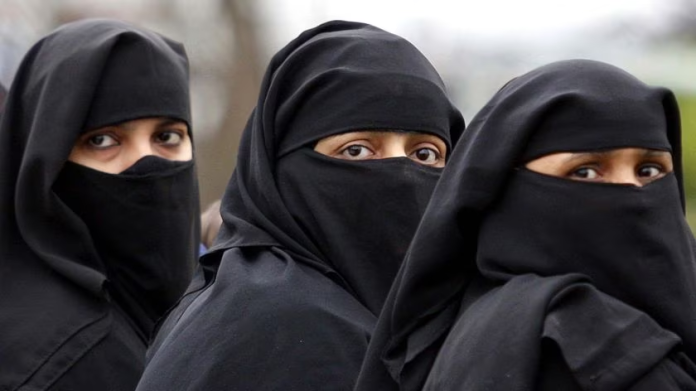The issue of banning Muslim garments, such as niqab and hijab, is gaining momentum in Europe and Asia, raising concerns over public safety.
The word hijab describes the process of covering in general, but is often used to describe the headscarves worn by Muslim women. It typically covers the head and neck but leaves the face open. The niqab, meanwhile, covers the face, leaving only the area around the eyes visible.
Critics argue that these items of clothing belong primarily to Arab Muslim culture, whereas attributing them to Asian cultural society contributes to the blurring of cultural concepts. The issue is particularly acute in countries like Kyrgyzstan and Tajikistan, where the government is keen to preserve cultural identity.
Tajik President Emomali Rahmon signed 35 laws, including a ban on certain garments. The laws are aimed at protecting the true values of national culture, as well as improving the spiritual and socio-economic values of the people of Tajikistan, according to the president’s press office.
Imitation of foreign culture in clothing, that is, wearing foreign clothes called satr and hijab, is another pressing problem for our society.
European concern
The issue of banning religious clothing is of particular importance as the terrorist threat in European countries has recently increased. Many attribute terrorist attacks to uncontrolled migration and the failure of authorities to provide sufficient security.
However, Muslim women living in Europe are in favour of being allowed to wear traditional dress in all places. For example, in some countries, schoolgirls are banned from attending classes wearing the hijab for the sake of “equality.” But the ban often results in parents withdrawing their daughter from school, depriving her of an education.
France passed a law banning the public display of religious symbols or dress in 2004. In Belgium, Austria, and Denmark, the niqab is banned, but women advocate being allowed to wear the traditional garment in all places.
In more eastern countries, such as Iran, Pakistan, Russia, and Afghanistan, women consider wearing the hijab a sign of patriarchy. However, defenders of the ban argue that it helps identify people who might otherwise avoid recognition by covering their faces.
Security against religious beliefs
The issue of security is particularly relevant in Russia, which has not yet recovered from the terrorist attack on the Crocus City Hall concert hall near Moscow. However, opinions are divided, as some see the ban on face-hiding clothing as a necessary security measure, whereas others argue that it could be perceived as infringing on the feelings of Muslim believers.
On 28 May, amendments were introduced in the Russian parliament to draft laws banning the wearing of religious clothing, garments with religious attributes and religious symbols in educational organisations. It also included a ban on wearing religious and other clothing that fully or partially conceals the face in state organisations and public places.
However, the Spiritual Administration of Muslims of Russia said it would support a proposal by Former Secretary of the Civic Chamber of the Russian Federation, Valery Fadeyev, to ban the niqab if official bodies found a link between wearing the niqab, which covers everything but the eyes, and an increased risk of extremism, according to Moscow Mufti Ildar Alyautdinov. State Duma deputy Biysultan Khamzaev also stated that the niqab “had nothing to do with Islam.”
The niqab is certainly an Arab garment, yes, but an Arab garment from the pre-Islamic period, that is, it appeared among Arabs before they embraced Islam.
